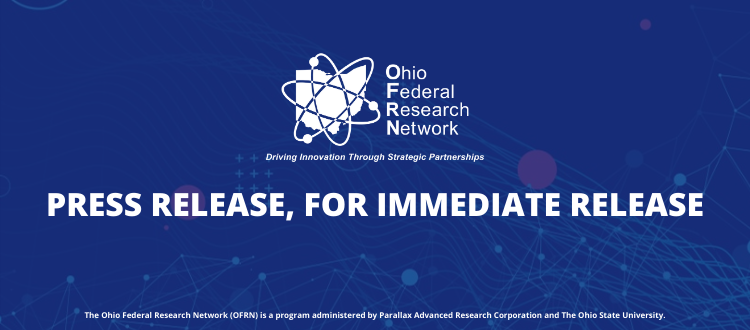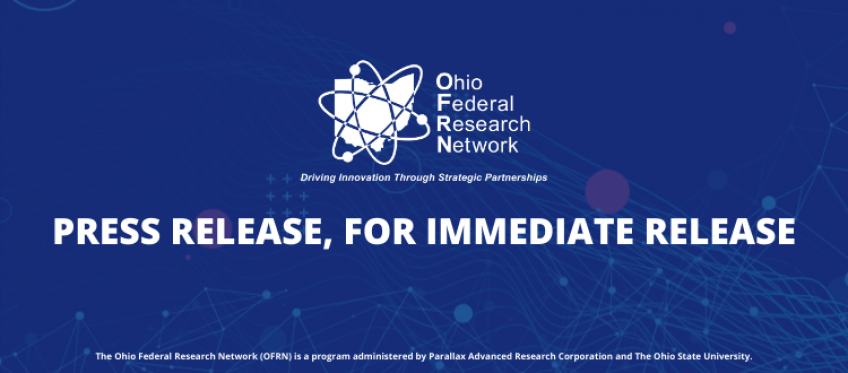From aviation, to automation, to biomedicine, one consistent problem engineers are working to improve is the science of creating motion, known as actuation. Researchers have been studying smart material-based actuation for over five decades. As simple as it seems, actuation is incredibly difficult to produce, especially in a way that mimics organic motion. Anything from the motion of flight surfaces on a wing of an airplane to a prosthetic limb involves precise actuation.
Recently, a team of engineers in Ohio is examining additive manufacturing as a new fabrication methodology to harness the power of a class of smart materials, known as Shape Memory Alloys that will help solve actuation difficulties within aerospace, automotive, and even biomedical devices. The research being made is possible due to a partnership curated by the Ohio Federal Research Network (OFRN).
To date, the OFRN team has received nearly $45 million in new research awards, with $200 million more in the pipeline. OFRN funded research projects like this are all aligned with the strategic research priority areas of the Ohio based federal labs and include 11 universities throughout the state and 52 industry partners.
The Ohio Federal Research Network awarded Dr. Mohammed Elahinia at the University of Toledo, and partners at the University of Dayton Research Institute (UDRI), Case Western Reserve University (CWRU), and The Ohio State University $666,958 to research Shape Memory Alloys through the Materials and Manufacturing Center of Excellence led UDRI This Center of Excellence is also sponsoring innovative research in flexible electronics at the University of Akron, high performance power conversion materials at CWRU, and low cost composite manufacturing at UDRI.
“What is unique about this project is our partnership with NASA Glenn Research Center”, said Dr. Elahinia “the right team came together and what made it possible was the OFRN support.”
This team’s smart material breakthrough with high temperature shape memory alloys is in harnessing its ability to heat up and quickly cool down at higher temperatures, making it more practical for actuation in automotive, aviation, and medical device industries and allows efficient customization for devices created from this smart material. These Shape Memory Alloys are also making strides in the field of additive manufacturing – better known as 3-D printing.
The team is the first research group to have successfully accomplished additive manufacturing with high temperature shape memory alloys, and the project has already resulted in the formation of a medical device company – Regenefix. Regenfix is focused on utilizing shape memory alloys and 3D printing for a new type of medical implant to aid in bone regeneration.
According to Dr. Elahinia, federal funding for innovative research can sometimes be a catch 22 – meaning it’s difficult to attain funding without initial data and research, but without funding there’s no way to produce that needed data and research. OFRN’s funding not only allowed Dr. Elahinia and his team to begin and continue his initial research, but go on to leverage more funding from the federal government, including additional NASA Glenn Research Center funding.
State Senator and Senate Majority Floor Leader Randy Gardner, a strong supporter of the Ohio Federal Research Network, stated “that the work being done through the Ohio Federal Research Network is outstanding. Statewide initiatives like the OFRN are an instrumental part of the economic engine driving Ohio’s future in a 21st century economy. Projects, such as this, are fueling innovation and jobs in Ohio’s future manufacturing sector – which is why my colleagues and I were such strong supporters of the OFRN during the state budget process last year.”
The Ohio Federal Research Network (OFRN) was approved by Ohio’s legislature in 2015. In addition to aligning Ohio research universities with key government research requirements and industry partners, the initiative is also intended to leverage the State’s research and development capabilities. OFRN has a goal to create new jobs and add $350 million in new federal research contracts over five years.


